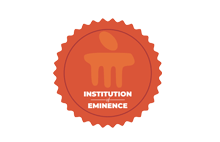Crashworthiness analysis of filled/unfilled automotive bumper beams subjected to head-on collision events: a numerical approach
Document Type
Article
Publication Title
Cogent Engineering
Abstract
In this study, the crashworthiness analysis of filled and unfilled bumper beams in head-on collisions was carried out through finite element simulations. The beam design was based on popular SUV brands in India. The outer bumper or fascia was made of AA6061-T6. Various advanced filler materials, including expanded polypropylene foam (cellular), pure PM aluminum foam (cellular), carbon fiber/epoxy (fiber-reinforced composite), and glass fiber-reinforced polymer (fiber-reinforced composite), were used to fill the inner bumper beam section. Based on the type of filler for the inner bumper section, the various configurations were given a nomenclature of C-I (Unfilled), C-II (Pure powder metallurgy aluminium foam), C-III (Expanded polypropylene foam), C-IV (Carbon fiber reinforced fiber), C-V (Glass fiber reinforced polymer). Numerical simulations were conducted using Ansys Explicit Dynamics ® software. The results indicated that EPP foam-filled bumpers (C-III) performed best in terms of crashworthiness, offering both lightweight properties and effective energy absorption. CFRP-filled bumpers (C-IV) showed the next best performance, showing high energy absorption, and the highest von Mises equivalent strain among the filler materials. PM aluminum foam-filled bumpers (C-II) demonstrated improved total energy absorption compared to unfilled bumpers, whereas GFRP-filled bumpers (C-V) exhibited poor crashworthiness characteristics.
DOI
10.1080/23311916.2024.2399737
Publication Date
1-1-2024
Recommended Citation
Pai, Anand; Kalliyath, Shaheen Ayyoobi; Rodriguez-Millan, Marcos; and Shenoy B, Satish, "Crashworthiness analysis of filled/unfilled automotive bumper beams subjected to head-on collision events: a numerical approach" (2024). Open Access archive. 10718.
https://impressions.manipal.edu/open-access-archive/10718


